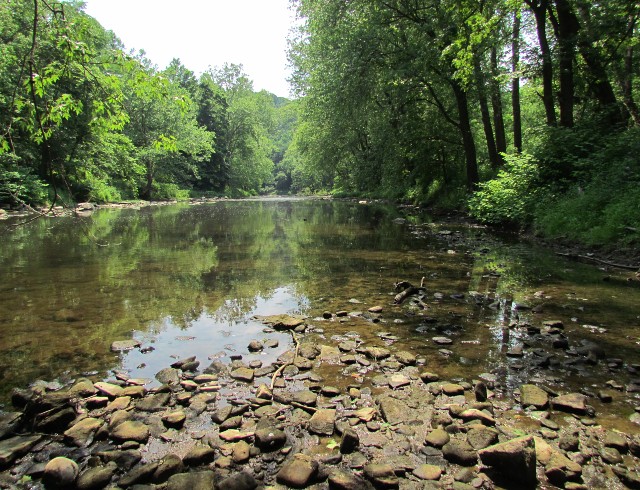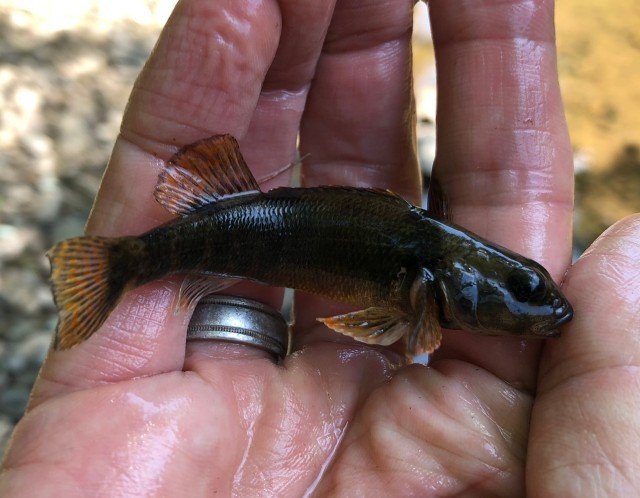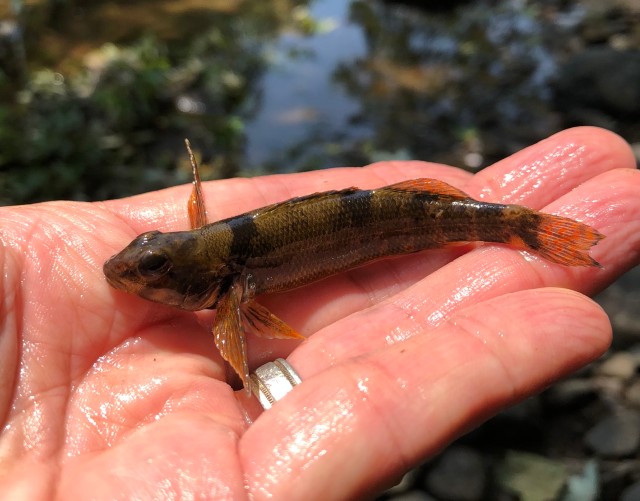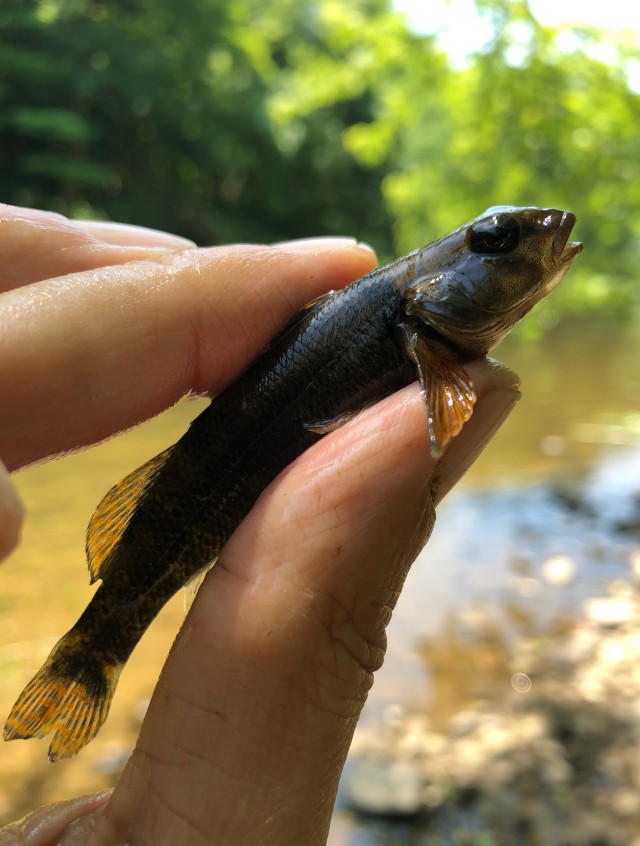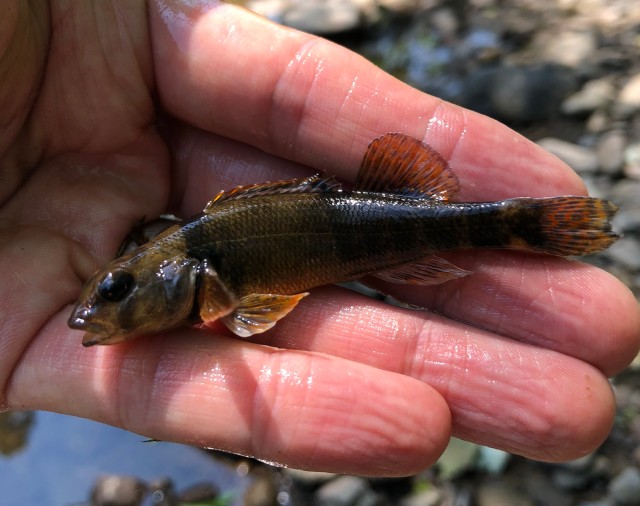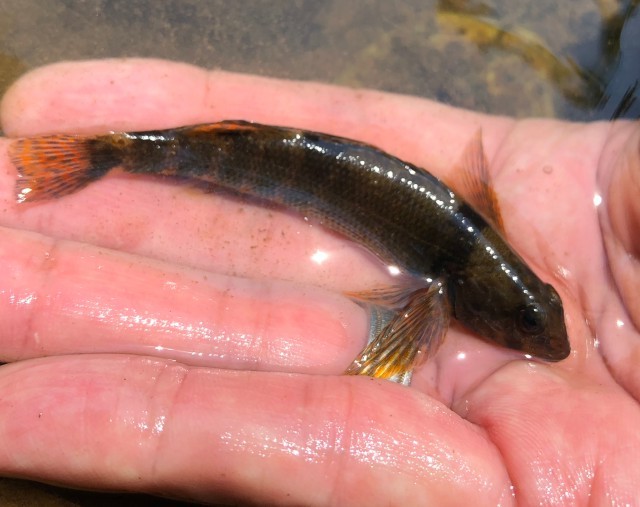While exploring a creek near Youngstown, Ohio, this month I came across one of these neat little fish for the first time. The Variegated Darter has large fins, a blunt nose and a mouth at the lower tip of its head. It typically grows to be about four inches long.
This fish is an insectivore, mainly feeding on insect larvae, crustaceans and other invertebrates found on the bottom of the waterways that it resides in. The name “darter” refers to the way this fish moves. Rather than swimming like most fish, the darter darts forward and then sinks to the bottom.
It does this because its air bladder is greatly reduced, interfering with the darter’s ability to stay afloat. This allows it to live in riffle areas where fish with air bladders would have the disadvantage of floating and being swept away by the current.
When a darter comes to rest, its fins and tail prop up its body in sort of a tripod position with its head angled upward. The key identification characteristic of this fish is the four to six saddles along its back; three to four of these saddles tend to be dark and visible while the remaining saddles are not.
Variegated Darters primarily live in larger streams with cobble, pebble, and gravel on the stream bed. In order to survive, they need waterways with high water quality. Due to this attribute, they are often viewed as an indicator of good water quality.
This was a great and unexpected creature to come across while out and about.

